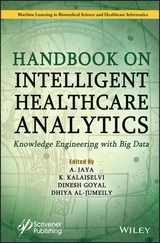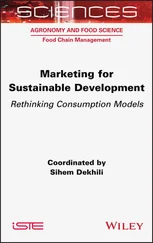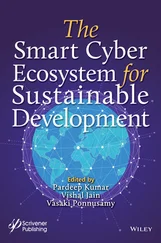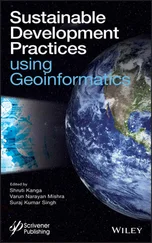1 ...7 8 9 11 12 13 ...51 Chapter 3focuses on a novel framework for detection of garments of interest from the footage of a surveillance camera. The video frames are processed using the GMG background subtraction model to obtain relevant foreground information along with foreground masks. The Mask R-CNN object detection model is used to identify customers and multiple image processing techniques are used to obtain the active garments in these frames. The detected customers are tracked and the OpenPose human pose estimation framework is utilized on them to obtain useful landmarks. The garments of interest are then determined based on the filtration of confidence scores calculated for each active garment. The framework was tested on a CCTV video dataset and was found to be effective despite facing arduous obstacles such as background noise and occlusions.
Chapter 4studies matrix algebra and elliptic curve arithmetic computing based on the integration of modular arithmetic and complex number arithmetic. It describes the intelligent computing of nonlinear transformations based on the residue matrices and the elliptic curve arithmetic over complex plane that can be applied in the computer science fields, which deal with cryptographic applications for more security. Their mathematical properties over complex plane are applied to create the cryptographic nonlinear transformation techniques in traditional ciphers, elliptic curve cryptography and quantum cryptography.
Chapter 5highlights the trends in fifth generation (5G) wireless communication and beyond. Further discussed is the use of machine learning algorithms in future wireless networks (5G and B5G). ML-based signal processing algorithms have the potential to solve network issues with 5G networks, thereby paving the way to the development of future intelligent wireless networks (B5G). This chapter presents a unified application of data science for wireless communication and analyzes the physical layer challenges for automatic modulation classification (AMC), resource allocation, channel estimation and millimeter wave communication. Further case studies have been carried out on AMC and CSI feedback in massive multi-input and multi-output (MIMO) systems. The performance of the proposed deep learning methods has been presented through extensive simulation results.
Chapter 6envisions how all present networks can be compiled into a single crowd associated network called a CrAN. This chapter contains a routing protocol for the proposed network. All applications for the proposed network are also discussed. The authors highlight the importance of creating this network and how it tackles transmission problems better than other networks. Some limitations of the proposed network are also mentioned.
Chapter 7demonstrates the application of a neural network (NN)-based group method of data handling (GMDH) for prediction of permeate flux (%) in disc-shaped membrane. The permeate flux is predicted using three parameters for this study such as pore size, operating pressure, and feed velocity. Different statistical techniques, such as mean absolute error, root mean square error (RMSE), RMSE-observation standard deviation error, and Pearson’s correlation coefficient, are analyzed in order to show the precision of the GMDH-NN models. To demonstrate the performance of the GMDH-NN model, the total error values are compared with the developed artificial neural network model. The study illustrates that the GMDH model predicts permeate flux of disc membrane with high accuracy.
Chapter 8introduces a new approach to identify nonfunctional needs by using nonfunctional requirements (NFR) catalogs via machine-learning methods, and proposes a process to acquire these catalogs by using a systemic mapping study of “lightweight.” The authors analysis provides a way of generating data sets used to classify non-functional specifications by NFR catalogs extracted from the mapping research in order to address the circumstance. They focus on the definition of the various NFR forms, with an emphasis on usability, security, performance and adaptability.
Chapter 9proposes an efficient and simple image recognition classification system, which consists of components from both reinforcement learning and deep learning. More specifically, Q-Learning is used with an agent having 2 states, and 2 to 3 actions. This classifier is different from others, because the latter use features of convolutional neural networks and also uses past histories in addition to Q states. Since the novel technique proposed has only 2 Q states, it has the advantage of being simple and also having significantly less parameters to optimize. The classifier given in this work performs better than other classifiers on the various datasets used experimentally.
Chapter 10zeroes in on minimizing human involvement in changing control program code whenever some nonlinear disturbance affects the industrial control process, viz. measurement and control of temperature and flow, etc., as used in real-time process control applications. The PID technique has certain control-related limitations, especially in the control of vital process parameters like temperature acting as nonlinear disturbances. The fuzzy control simulation results worldwide have proved their superiority over conventional controllers and this technique has emerged as a harbinger in the implementation of artificial techniques. In this work, the vast processing power inherited in the biological neural structure has motivated the use of neural networks along with fuzzy logic in solving the control problem in the area of process control.
Chapter 11discusses applications of artificial neural networks in the manufacturing sector in detail. The Industry 4.0 approach, which calls for exhaustive useof computers in different sectors of industry, is discussed along with suitable diagrams. Seven different types of ANN architecture are explained, along with different types of learning techniques exhibited by neural networks. A case study involving real-time hard machining experiments is explained with the help of MATLAB software NNTool module. Finally, an optimization model is derived and explained with ANN. The chapter also describes the advantages and applications of ANN in mechanical and manufacturing technology.
Chapter 12proposes a system for the multilingual translation of speech to text. The conversion is based on speech signal knowledge. The speech-to-text (STT) process takes as input the utterances of human speech and includes as output a string of words. The purpose of this system is to extract, classify and acknowledge speech information. The project aims to automate the application to overcome the language barrier between countries and even states throughout the world; the above program will perform the different features in the application. The application recognizes speech (human matter) in one language to communicate expressively to another language specified by the user.
Chapter 13presents a survey on the classification of automatic summarization techniques. Searching for relevant information in summaries typically consumes less time as opposed to searching the entire collection of web pages or documents. Summary generation is helpful in many natural language processing tasks such asretrieving the relevant documents, indexing the text documents, generating personalized summaries, document classification, question and answering system. Extractive summarization techniques are easy to develop as opposed to abstractive summarization, but abstractive summarization models are capable of producing more coherent summaries than extractive methods. This chapter also includes a discussion of different types of datasets used. Intrinsic and extrinsic methods for evaluating summaries are also discussed by the authors. From this survey it is observed that different summarization techniques are found suitable for different datasets. The chapter concludes with a discussion about open research problems to be solved in automatic text summarization (ATS).
Читать дальше












